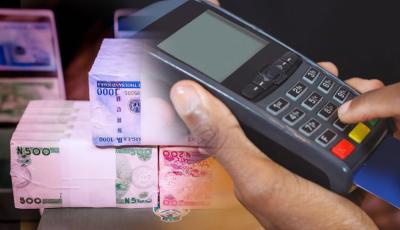What is a POS?
A point of sale (POS) is a device that retail customers use to speed up transaction processing. A cash register is a kind of point-of-sale (POS) system. Electronic point-of-sale (POS) terminals have essentially supplanted traditional cash registers, offering the capability to accept credit cards, debit cards, and cash transactions.
A point of sale (POS) may either refer to a tangible device located in a physical shop or a virtual checkout point in an online retailer.
The software for point-of-sale (POS) systems is becoming more sophisticated, including advanced functionalities that enable shops to closely monitor inventory levels and purchasing patterns, track pricing accuracy, and gather valuable marketing data.
KEY TAKEAWAYS
A point of sale (POS) is a location where a consumer completes the purchase for products or services and where sales taxes may need to be paid.A point of sale (POS) transaction may take place either in a physical location or via the internet, and can result in the generation of receipts in either printed or electronic format. Merchants are increasingly choosing cloud-based POS solutions.POS systems are becoming more interactive, especially in the hotel sector, enabling clients to electronically place orders, make bookings, and pay their bills.
Understanding POS
Points of sale (POSs) are a significant area of interest for marketers since customers prefer to make buying choices for high-profit items or services at these critical places. Historically, companies have positioned point-of-sale systems in close proximity to shop entrances in order to enhance the frequency of spontaneous purchases made by consumers upon their departure. Nevertheless, having several ports of sale (POS) locations might provide merchants with additional chances to target certain product categories and exert influence on customers at early stages in the sales process.
Department stores often use point-of-sale (POS) systems for certain product categories, such as appliances, electronics, and fashion. The assigned personnel may proactively endorse items and assist customers in making buying choices rather than only carrying out transactions. Similarly, the structure of a point-of-sale (POS) system may impact profitability and consumer purchasing behaviour since it provides customers with versatile choices for completing a transaction.
Amazon Go, a revolutionary convenience store idea by Amazon, utilises advanced technologies that enable customers to enter the store, pick up things, and leave without the need for a traditional checkout process. This has the potential to transform point-of-sale (POS) systems.1 In addition to enhancing ease, this might facilitate the integration of point-of-sale systems, loyalty programmes, and payment methods into a unified customer-centric experience.
Benefits of POS Systems
Electronic point-of-sale (POS) software solutions optimise retail operations by automating the transaction process and monitoring crucial sales data. Essential components consist of an electronic cash register and software designed to synchronise data obtained from everyday transactions. The implementation of a network of data-capture devices, such as card readers and barcode scanners, may improve functionality in retail.
Retailers have the ability to monitor price accuracy, inventory fluctuations, gross income, and sales trends based on the characteristics of the software they use. Utilising integrated technology for data tracking enables merchants to identify inconsistencies in pricing or cash flow that may result in profit loss or disrupt sales. Point-of-sale (POS) systems that track inventory and analyse purchase patterns may assist merchants in preventing customer service problems, such as running out of stock, and customising their purchasing and marketing strategies based on consumer behaviour.
Special Considerations: POS Innovation
Contemporary point-of-sale (POS) systems are often capable of being programmed or may be upgraded with third-party software applications. These systems may be customised to meet unique requirements. Many shops use point-of-sale (POS) systems to effectively administer membership programmes that provide rewards in the form of points to regular purchasers and provide discounts on future purchases.
Cloud-based point-of-sale (POS) systems are becoming more prevalent, especially among major e-commerce retailers, to efficiently manage and handle a high volume of transactions. Cloud-based solutions may significantly decrease the initial expenses associated with deploying a point-of-sale (POS) system for several organisations.
In the hotel business, customers have the ability to directly engage with POS systems. Commonly known as geolocation technology, these systems have the capability to carry out transactions at the physical locations of customers. At several eateries, patrons have the option to peruse menus and submit orders using computers conveniently positioned at their tables. Customers at hotels use such terminals to make orders for room service or settle hotel bills.
POS display makers prioritise enhancing aesthetics and developing novel product designs to help brand owners remain competitive and effectively promote their goods. Furthermore, the escalating rivalry in the retail sector and the consequent utilisation of point-of-sale (POS) displays to attract clients and drive product sales have prompted merchants to request diverse tailor-made displays that may cater to distinct requirements in various retail establishments. The ability to customise a product’s appearance, storage capacity, and portability may have a significant influence on a company’s brand recognition.

Leave a Reply